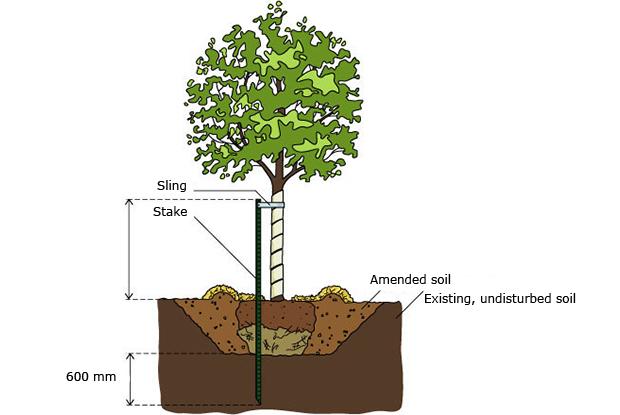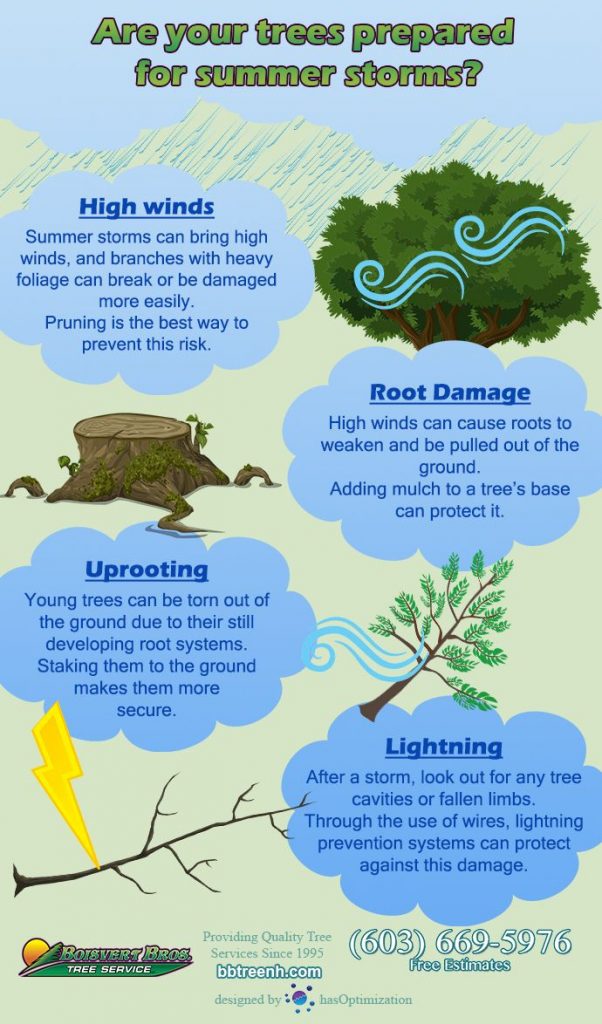We aren’t strangers to summer storms here in Connecticut. July was testament to this as much of the state was left without power, with downed trees and power lines all thanks to storm Isaac.
Downed trees were common in many parts of the state. Trees were reported to have crashed into homes in the city, and several cars were reported to be beneath felled wires.
While it is not always possible to predict or protect against all tree damage, there are proactive things you can do to help reduce any risk.
Below is a helpful illustration, put together by the experts at Boisvert Bros Tree Service in New Hampshire.
The advice, and we have to agree goes as follows:
- Prune overgrown trees
Trees with overgrown branches makes it easier for wind to push and accumulate against the tree, put strain on it’s limbs and possibly topple it over. Pruning helps to prevent these risks.
2. Protect the roots
High winds can put a lot of pressure on tree roots, weakening them and eventually ripping them from the ground if there’s enough force. While it may not guarantee the trees safety, adding mulch around the base of a tree can help to protect it against some of this damage.
3. Stake young trees to the ground
Young trees are particularly vulnerable to being torn out from the ground as their root systems are not as well established and easily disturbed.
A tree stake is a pole that runs into the ground and is tied to the young tree trunk providing support.

4. Protect against lightning
Trees are particularly vulnerable to lightning if they’re exposed, or indeed tall. Various lightning protection systems can be installed which direct bolts of electricity away from the tree and into the ground where they can be dispersed.

For advice about protecting trees against storm damage in Connecticut, or repairing and cleaning up after a storm, do not hesitate to contact Madd Beaver Tree Experts: (203) 305-2584
